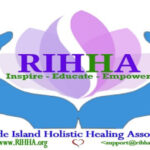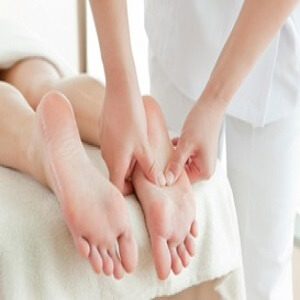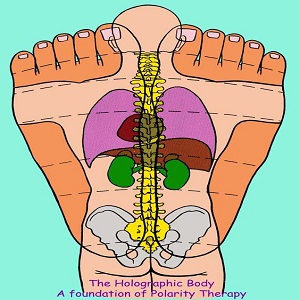REFLEXOLOGY
Reflexology , an integrative health practice, maps a reflection of the body predominantly on the feet, hands and outer ears. It uses unique manual techniques to deliver pressure to neural pathways assisting the body to function (Reflexology Association of America – 2019) optimally.
History: Reflexology has been practiced around the world for thousands of years. It is believed that the earliest forms of the practice originated in China 5000 years ago and spread to India and Japan. The Cherokee tribes of North America also developed a form of reflexology.
Reflexology is one of the only healing disciplines to focus entirely on the ability of the hands, feet and outer ears to control and regulate physical processes throughout the body. By placing pressure on various areas of the hands and feet, the reflexologist sends healing signals to various parts of the body.
Many theories exist to explain how reflexology produces results. Practitioners believe that the thousands of nerve endings in the ears, hands and feet can be manipulated through touch to trigger healthy responses in corresponding areas of the body. For example, the tips of the toes correspond to the brain, the balls of the feet correspond to the lungs and the heels correspond to the pelvis and sciatic nerve. By using precise touch, the reflexologist can address specific issues in the body.
Reflexology has shown great success in treating circulation and lymphatic conditions, improving overall health by promoting relaxation, detoxification and immune strengthening. Other conditions that respond well to reflexology include: migraines, infertility, back pain, hormonal imbalances and digestive disorders as well as physiological issues, such as depression and anxiety…
Reflexology in the U.S. was begun by two Medical Doctors, William Fitzgerald and Joseph Riley in the early 1900’s. Eunice Ingham was a physiotherapist working for Dr. Riley. She did reflexology on a large number of people, kept careful records, and then started a school to teach others – this original school is still run today by her nephew, Dwight Byers, in Florida.
What is it? It is the physical act of applying pressure, using thumb, finger and hand techniques, stretch and movement to reflex points, located in the outer ears/hands and feet.
How does reflexology work? Our body is made up of energy. Sometimes our energy shortcircuits, as stress affects the body in various ways, making it sluggish, and you not feel well. For example, – you’re under a lot of stress, going right out straight, not eating what you should, etc. Perhaps your shoulders are full of tension, your head hurts, and your stomach is “tied up in knots”! Indigestion follows, along with other stress-related problems. Reflexologists believe that the reflexes on your ears, hands and feet correspond to all organs in your body. It’s quite amazing, but when you have a headache, a stomachache, shoulder pain, etc., a reflexologist can tell by the tenderness of the corresponding reflexes in your feet. With reflexology, energy paths are opened, stress gives way to relaxation and the body gets a needed “tune up!” (Better circulation, elimination of toxins, and, regulation of bodily functions; creating order, harmony and balance within your body)
What should a client expect from a Reflexology session? A full session is approximately 1 hour long. It is a clothed session with only the removal of shoes and socks as a requirement for foot Reflexology. The Reflexologist will use a special chair or massage table. Reflexologists use pressure, stretch and movement to work through the ear/hands and/or feet methodically. The Reflexologist will work within the client’s comfort zone. (For example, applying pressure to a spot on the arch of the foot will benefit bladder function.)
A person can either use reflexology on her or his self, or enlist the help of a reflexologist. Millions of people around the world use the therapy to complement conventional treatments for conditions including anxiety, cancer, diabetes, kidney function, and asthma. Some studies have found that reflexology can improve respiratory function in breast cancer patients, reduce fatigue, and improve sleep.
Look for a RIHHA Member
on the Members Page.



